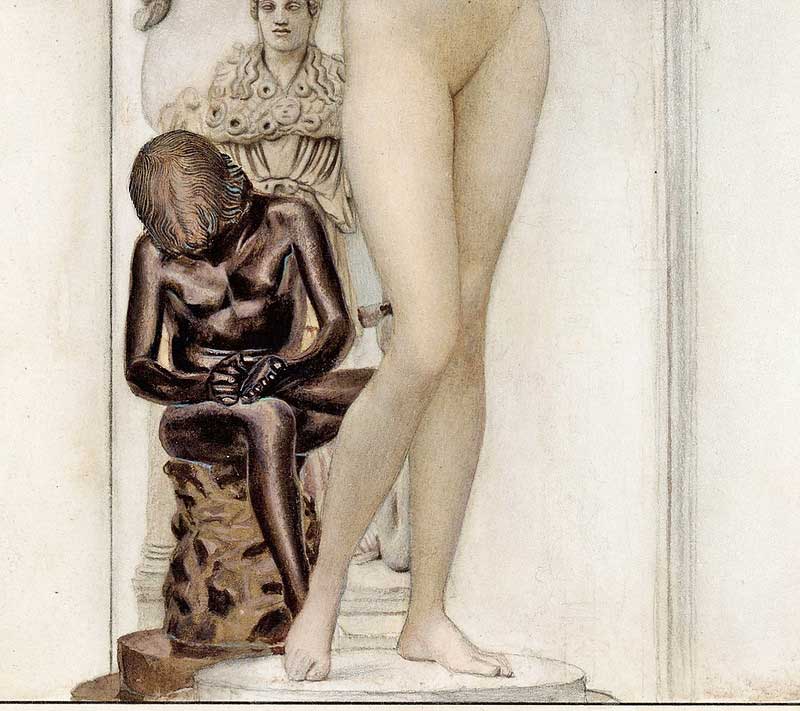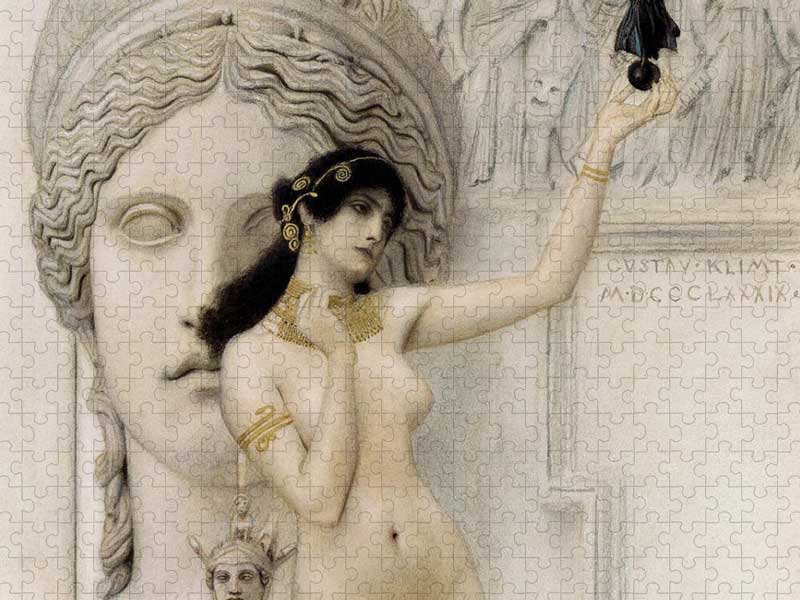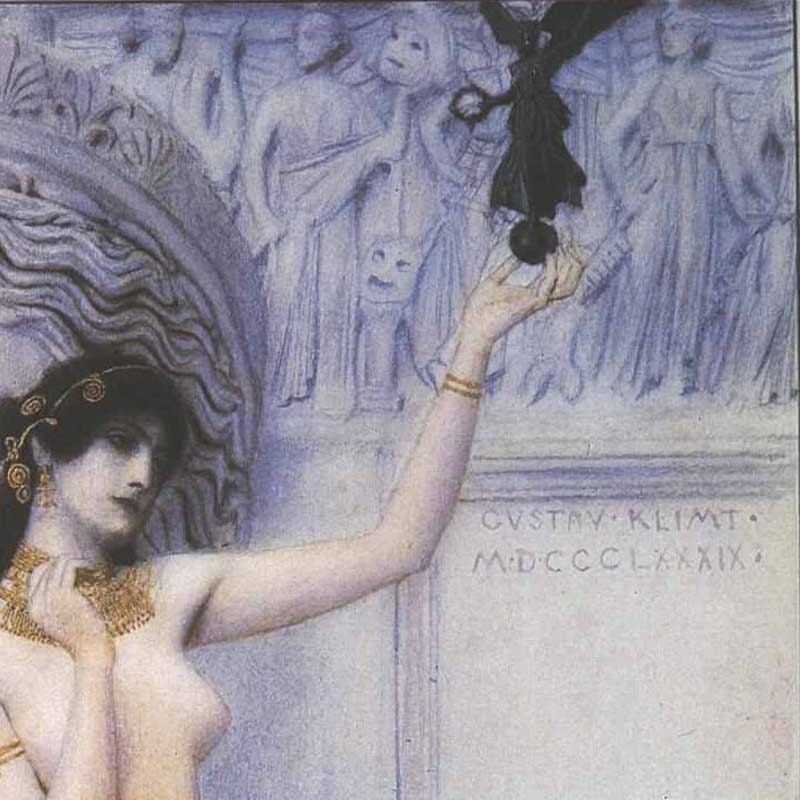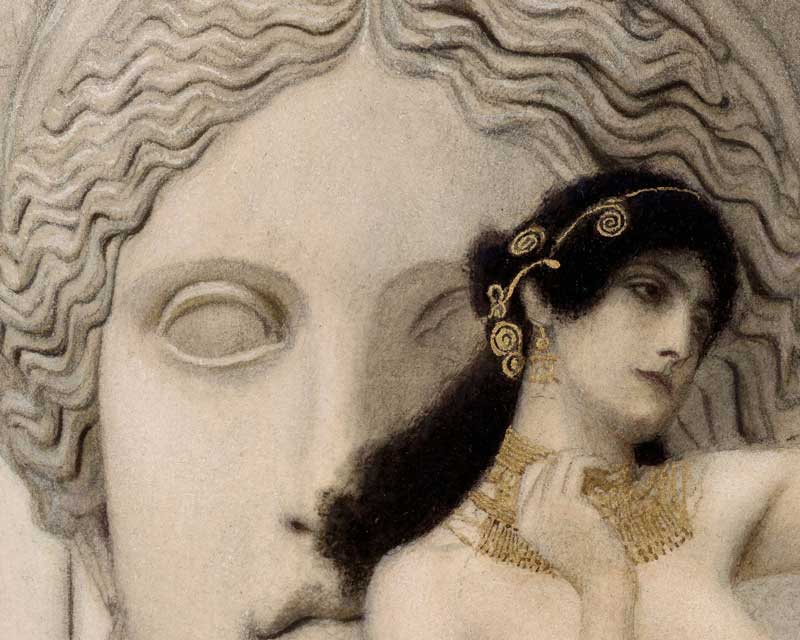
Die Allegorie der Skulptur or Allegory of Sculpture, a pencil and watercolour painting highlighted with gold on cardboard, is a creation by the Austrian painter Gustav Klimt. The painting depicts the personification of sculpture, a nude female figure in the centre, standing before the backdrop of classical sculptural motifs. Her hair is adorned with ornaments that seem to be related to the Hellenistic Period, and she also carries a snake bracelet, earrings, and a delicate gold necklace. In her left hand she holds a Victoria adorned with a laurel wreath, and balancing on a globe. The motifs in the backdrop of the personification of sculpture, a beautiful nude female figure, include the Boy with Thorn, also known as the Spinario, depicting a boy withdrawing a thorn from the sole of his foot, and Athena Parthenos, a classical Greek sculpture of Athena, as well as Juno Ludovici, often associated with the goddess Juno, enthroned above all, creating a visual tapestry of classical art.

Created in 1889, for the 25th anniversary of the Austrian Imperial Royal Museum of Art and Industry, now known as the Museum of Applied Arts (MAK), and dedicated to Archduke Rainer, an Austrian prince and politician, Allegory of Sculpture, styled in the Art Nouveau movement, and representing the fusion of sculpture and painting in a single image, is considered a symbol of Klimt's early style and his connection to classical art.

The composition of the painting with a female figure at the centre, surrounded by decorative motifs, created a magical and enigmatic atmosphere on the canvas. In addition, the use of bright and contrasting colours of gold and silver, gave it a luxurious and elegant look. The artistic style of the composition, soothing colour effect, and the story behind its creation made it a fascinating and unique work of art. Interestingly, Klimt was commissioned to paint a series of murals in the Secession Palace in Vienna, and Allegory of Sculpture was one of the works he created for that project. Although during that time, the work was criticised for being too decorative and symbolic, today it is considered as one of the most important works of the artist. Its superb artistic style, exquisite composition, contrasting colour combination, and the story behind its creation made it a fascinating and unique work of art.

Considered as a masterpiece of symbolic art, representing the fusion of sculpture and painting in a single image, Allegory of Sculpture displayed in the Museum of Applied Arts in Vienna, is an explicit testimony of Klimt’s artistry in capturing the vital essence of the Art Nouveau style through his unique aesthetic and thematic choices.
